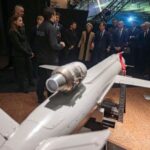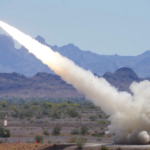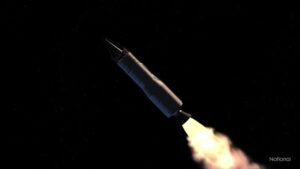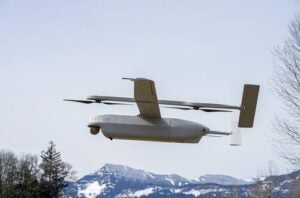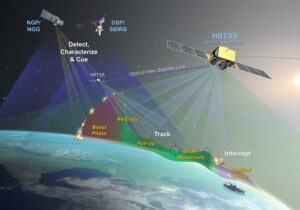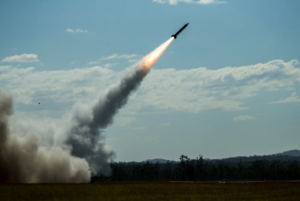
By Shaza Arif, Defense Opinion Writer.
Air defense systems (ADS) constitute a central function in modern conflicts. However, the increasing pace of their export has extended the role of the systems beyond the battle space. Their scope no longer is limited to war rooms, it is also in the politics of their export. Hence, modern ADS have become important instruments, shaping contemporary politics.
The intersection of ADS and politics is most evident in high-profile systems.
The Russian S-400 is a recent geopolitically controversial defense sale. Turkey’s 2017 purchase of the S-400 sparked major concerns within NATO. The episode marked the first instance where a NATO country acquired Russian weaponry, brushing aside the interests of the security alliance.
Consequently, Washington removed Ankara from the F-35 fighter jet program, though interoperability concerns of S-400 with NATO weaponry were cited as the reason for the punitive action.
As a display of political intent, Russia gave a subtle message to NATO by employing its weaponry in one of the key NATO states. In parallel, Turkey demonstrated an independent foreign policy approach following repeated refusals of the Patriot systems, the U.S. competitor to the Russian ADS.
Air defense systems as tools of influence
In South Asian context, India’s purchase of S-400 systems in 2018 raised notable concerns in the U.S. This surfaced at a time when Washington was courting New Delhi as a strategic ally in the Indo-Pacific.
The introduction of the latest ADS technology in South Asia has adversely impacted regional security dynamics. In the future, the Russian S-500, with an extended range of approximately 372 miles, is also likely to unleash new developments in different regions.
Like Russia’s use of ADS as an instrument for signalling political intent, the U.S. has also leveraged its ADS, notably the Terminal High Altitude Area Defense (THAAD) and Patriot MIM-104 system, to reinforce its clout in key regions such as the Middle East.
The selective export by the U.S. of Arrow air defense equipment and interceptors for Israel’s Iron Dome system has shaped Israel’s defense policies and continues to reaffirm U.S. commitment to Israel in the region.
Air defense in the Middle East is a top focus
The U.S. is positioning the THAAD system in key states such as the United Arab Emirates (UAE) and Saudi Arabia as it exports the Patriot system to Saudi Arabia, Bahrain, Qatar, Kuwait and the UAE.
While the U.S. weaponry provides a robust defensive counter to Iran, it is also triggering an arms race in the Persian Gulf. Furthermore, as witnessed in the recent Israeli attack on Qatar, the increasing reliance on American ADS might have raised second thoughts in the Gulf regarding future procurements. The failure to intercept the attacks might raise doubts on the reliability and operational effectiveness of the existing systems.
Moreover, this pattern is also seen in the Asia-pacific region with the U.S. THAAD system deployed in South Korea. It shows U.S. solidarity with the state and serves to deter adversaries in the region. The system has raised notable concerns in Beijing, particularly due to the performance of THAAD’s AN/TPY-2 radar, which directly impacts China’s air defence, triggering countermeasures and escalation in the region.
In parallel, Beijing is developing its own defense network including HQ-9 and HQ-22 as low-cost alternatives to Russian and American systems. In regions where political alignment constrains Western options, such as the Middle East, the Chinese ADS can appeal to potential buyers.
Technical challenges for nations
Apart from politics, the procurement of advanced systems comes with numerous technical challenges, including interoperability issues. Optimal performance requires seamless integration of sensors, radars, interceptor missiles and command and control links.
For instance, India has a diverse mix of suppliers, including the U.S., France, Russia and Israel. As a result, the systems have encountered interoperability and integration challenges as witnessed in the May conflict between India and Pakistan during which the S-400 failed to provide the required coverage to Indian jets.
Air defense exports are impacting critical and conflict-prone regions stretching from West Asia, South Asia to the Asia Pacific. These regions are becoming theaters for the exports of Russian, American and Chinese ADS.
The exports impose technical and political dependency on the procuring state. The purchase invites multiple risks, especially when tied to sanctions, as in the Ankara case.
Furthermore, the procurement requires integration, training, technical assistance and software updates, locking buyers into long-term dependencies and forcing pseudo alliances. Given the ongoing trends, it is likely that many states may move toward indigenous solutions to overcome existing challenges.
Shaza Arif is a senior research associate at the Center for Aerospace & Security Studies in Islamabad, Pakistan. The think tank is part of the advisory board to the government of Pakistan’s national security division. Her expertise includes national security and strategy, defense modernization, nuclear security and artificial intelligence

Are you a Defense Daily reader with a thought-provoking opinion on a defense issue? We want to hear from you.
- We welcome submissions of opinion articles on national security, defense spending, weapons systems and related areas.
- We welcome submissions from lawmakers, administration officials, industry representatives, military officials, academics, think tank experts, congressional candidates, international experts and others on issues important to the national defense community.
- We welcome a diverse range of opinions all along the political spectrum.
- Email: editor@DefenseOpinion.com


